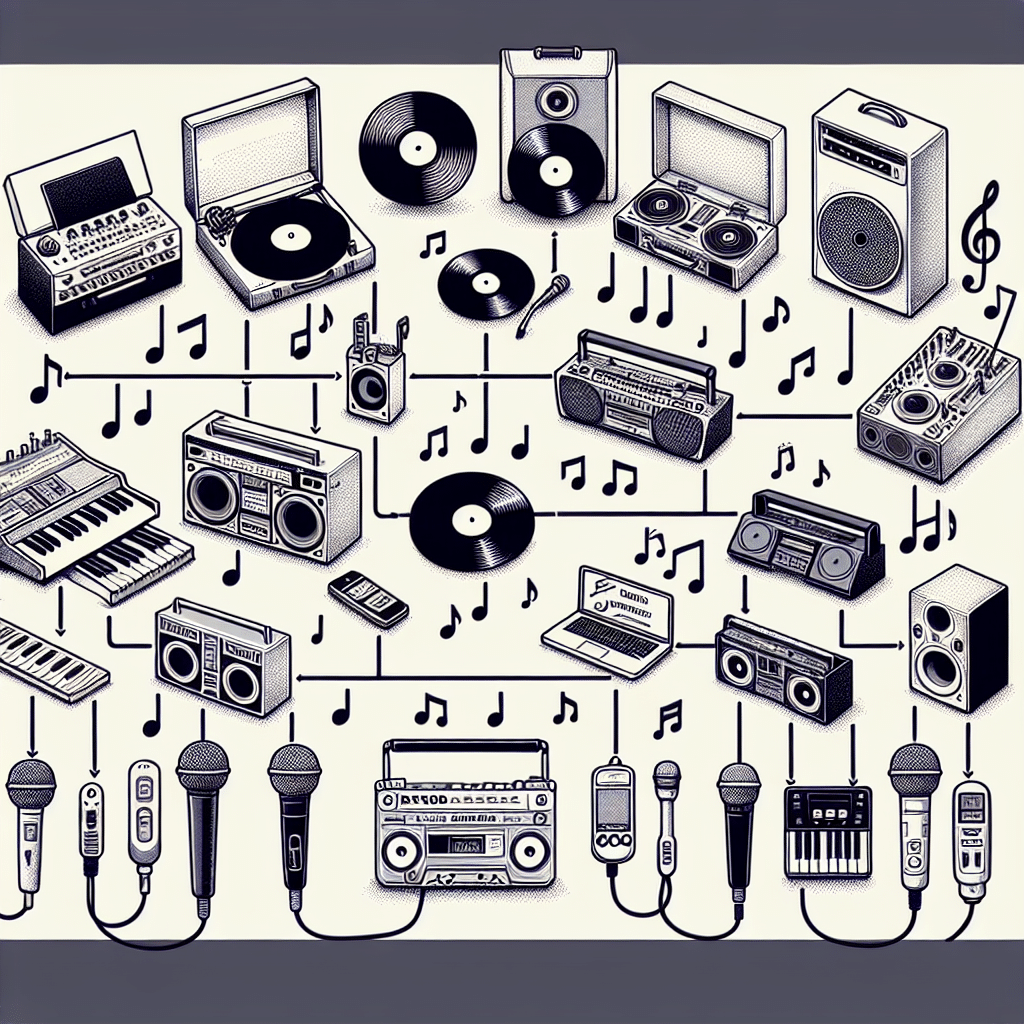From Motown to Modern: The Evolution of R&B Classics Through the Decades

Introduction
Rhythm and Blues (R&B) is a genre that has profoundly shaped the musical landscape over the decades. Emerging in the African American communities during the 1940s, R&B has gone through various transformations, reflecting societal changes and evolving musical styles. From the soulful sounds of Motown to contemporary interpretations, R&B remains a dominant force in the music industry. This article will explore the historical context, key artists, current trends, and cultural impact of R&B, capturing its evolution from the roots of Motown to modern times.
Historical Context
The origins of R&B can be traced back to the melding of various musical influences, including jazz, blues, gospel, and pop, in African American culture. The term "Rhythm and Blues" was first coined by Jerry Wexler at Atlantic Records in 1947 to describe a style of music that had a more upbeat tempo and rhythmic groove, distancing it from the traditional blues. The 1950s saw the genre grow in popularity, fueled by artists like Ray Charles and Ruth Brown, who introduced powerful vocals and instrumentation.
The 1960s marked a significant turning point for the genre, largely due to the phenomenon of Motown Records, founded by Berry Gordy. This label became synonymous with the "Motown Sound," characterized by melodic hooks, lush orchestration, and vibrant harmonies. Artists like The Supremes, The Temptations, and Marvin Gaye brought R&B to the mainstream, bridging the gap between black and white audiences.
The 1970s introduced a new era of R&B with the advent of funk and disco. Influential figures like Stevie Wonder and Earth, Wind & Fire incorporated more diverse musical elements, expanding the genre's reach. By the 1980s and 1990s, R&B had evolved into a broader category, uniquely merging with hip-hop and pop, showcasing artists like Whitney Houston and Boyz II Men.
See Also: Unforgettable Duets: The Best R&B Love Songs to Share with Your Partner
Unforgettable Duets: The Best R&B Love Songs to Share with Your PartnerKey Artists
Motown Era Icons
Marvin Gaye: Renowned for his socially conscious lyrics and smooth vocal style, Gaye’s albums "What's Going On" and "Let's Get It On" solidified his place in music history. His work explored themes of love, war, and social justice.
The Supremes: As one of the most successful and influential female groups, their melodic harmonies and glamorous image played a pivotal role in the popularity of Motown.
- Stevie Wonder: With hits that blend social commentary and love themes, Wonder's innovative use of synthesizers and instrumental prowess redefined R&B and pop music.
1980s and 1990s Innovators
Whitney Houston: With her powerful voice and emotive ballads, Houston bridged R&B and pop, spawning a new era of vocalists who sought to emulate her success.
TLC: Pioneering female empowerment in their lyrics and style, TLC's mix of R&B with hip-hop established what became known as "New Jack Swing," directly influencing future generations of artists.
- Boyz II Men: This group revitalized the classic doo-wop sound and set records with their harmonies, demonstrating R&B’s continuous evolution while paying homage to its roots.
Contemporary Stars
Beyoncé: As a former member of Destiny's Child, Beyoncé's solo work has redefined modern R&B, fusing elements of hip-hop and pop while exploring themes of empowerment and identity.
See Also:Khalid: Emerging in the late 2010s, Khalid's blend of contemporary R&B and soul resonates with younger audiences, capturing experiences of love and youth in a style reminiscent of classic R&B.
- SZA: With her soulful voice and honest lyrics, SZA has embraced vulnerability in her music, attracting a dedicated following and reflecting the diverse sound of modern R&B.
 R&B Icons: The Artists Behind the Classics That Changed the World
R&B Icons: The Artists Behind the Classics That Changed the WorldCurrent Trends
Today, R&B continues to thrive, adapting to technological advancements and shifting cultural perspectives. The genre has increasingly embraced collaborations with hip-hop artists, yielding hits characterized by catchy hooks and rhythmic beats. In addition, the rise of platforms like Spotify and Apple Music has created opportunities for independent artists to distribute their music, leading to a renaissance of R&B sub-genres such as neo-soul, contemporary R&B, and alternative R&B.
Moreover, themes of intersectionality, mental health, and identity have become prevalent in today’s R&B music. Artists like H.E.R., Daniel Caesar, and Jhené Aiko are embracing personal narratives, enhancing emotional depth and authenticity in their work. Social media has also become a platform for artists to connect with fans, further driving the genre's relevance among younger listeners.
Cultural Impact
R&B’s cultural significance extends beyond music; it has influenced fashion, dance, and social movements. The genre has played a crucial role in civil rights advocacy, with artists using their platforms to address issues such as racism and inequality. For instance, Marvin Gaye's "What's Going On" and Beyoncé's "Formation" are among songs that not only reflect social issues but also inspire activism.
See Also: Timeless Grooves: Celebrating the Enduring Legacy of R&B Classics
Timeless Grooves: Celebrating the Enduring Legacy of R&B ClassicsIn addition, R&B has significantly impacted the music industry, influencing the development of pop and hip-hop music. The genre's fusion with various styles has led to numerous cross-genre hits, underscoring its versatility and richness. R&B artists often serve as cultural ambassadors, shaping dialogues around identity, race, and personal experiences, making the genre relevant across generations.
Conclusion
From its roots in the soulful sound of Motown to contemporary interpretations that push musical boundaries, the evolution of R&B classics showcases the genre's adaptability and enduring appeal. R&B reflects and shapes cultural narratives, bridging gaps between communities while addressing universal themes of love, struggle, and empowerment. The genre's rich history and innovative spirit ensure its place in the hearts of listeners for decades to come, continuously influencing future generations of artists.
FAQs
1. What is the difference between R&B and soul music?
R&B and soul music share similar roots and influences, but R&B often has a broader range of styles, including pop and hip-hop influences. Soul music tends to emphasize emotional expression and has stronger ties to gospel music.
See Also: Rhythm & Blues Royalty: Celebrating the Best R&B Artists of All Time
Rhythm & Blues Royalty: Celebrating the Best R&B Artists of All Time2. Who are some of the most influential R&B artists today?
Current influential R&B artists include Beyoncé, Khalid, SZA, H.E.R., and Daniel Caesar, all of whom have reshaped the genre with their unique sounds and thematic content.
3. How has technology impacted R&B music?
Technology has transformed how music is produced, distributed, and consumed. Streaming platforms have democratized access to music, enabling a new generation of artists to reach audiences without traditional industry gatekeeping.
4. What themes are commonly explored in R&B music?
Common themes in R&B include love, heartbreak, empowerment, identity, and social issues. Many artists use their music to discuss personal and societal experiences that resonate with listeners.
5. Is R&B still popular today?
See Also: Soulful Sounds: How R&B Classics Shaped the Music Landscape
Soulful Sounds: How R&B Classics Shaped the Music LandscapeYes, R&B remains immensely popular today, with a strong fan base and a significant presence in mainstream music. Its evolution continues to attract new listeners and influences various genres.
If you want to know other articles similar to From Motown to Modern: The Evolution of R&B Classics Through the Decades you can visit the category R&B.
